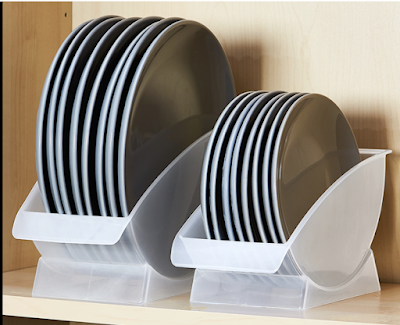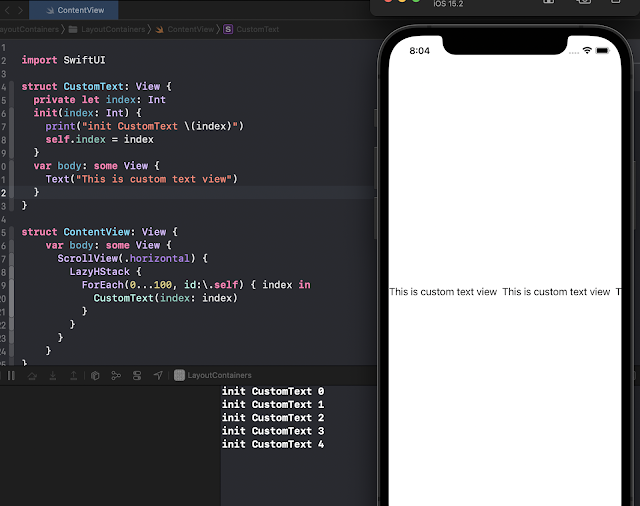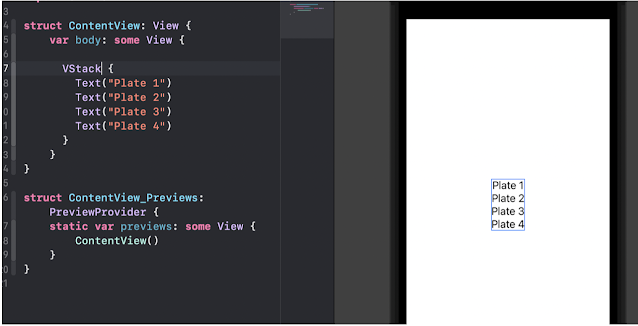SwiftUI Layout Containers
It is always better to know about all the tools before you start your DIY project. You need to know what tools are available and what each tool can be used for. The same strategy can be applied to UI design. If you know all the available tools provided by the SwiftUI framework then you will be able to apply that knowledge to the beautiful designs that your designer has provided you with. Following are the Layout containers provided by SwiftUI.
HStack
you can refer HStack as a horizontal stack. You want to stack your controls shown in the image below.
The views in SwiftUI are aligned in a similar fashion as shown in image below.
LazyHStackAs the name says this is a Lazy container. As the keyword, Lazy in a programming language is a strategy to delay the initialization until it is needed. The views in the LazyStack are not initialized until they are needed.
You can try this code and see how it works.
import SwiftUI
struct CustomText: View {
private let index: Int
init(index: Int) {
print("init CustomText \(index)")
self.index = index
}
var body: some View {
Text("This is custom text view")
}
}
struct ContentView: View {
var body: some View {
ScrollView(.horizontal) {
LazyHStack {
ForEach(0...100, id:\.self) { index in
CustomText(index: index)
}
}
}
}
}
It should look like as shown in image below when you first run it.
VStack
The Stack is referred to as vertical stack e.g. as shown in the image below
The corresponding SwiftUI views are stacked in a similar fashion as shown in the image below.
LazyVStack
LazyVStack works very similar to LazyHStack, it's just that it will align the items vertically. Before you read further, I want you to try the code from the LazyHStack section and just change the LazyHStack to LazyVStack.
Check the output in the debug window. Must be wondering what is going on there. All the items are getting rendered.
So what should you do it fix it? Try it before looking at the code below.
|
|
|
I am sure you have tried it. The thing is that you need to change the ScrollView to be .vertical.
import SwiftUI
struct CustomText: View {
private let index: Int
init(index: Int) {
print("init CustomText \(index)")
self.index = index
}
var body: some View {
Text("This is custom text view")
}
}
struct ContentView: View {
var body: some View {
ScrollView(.vertical) {
LazyVStack(alignment: .center, spacing: 50) {
ForEach(0...100, id:\.self) { index in
CustomText(index: index)
}
}
}
}
}












